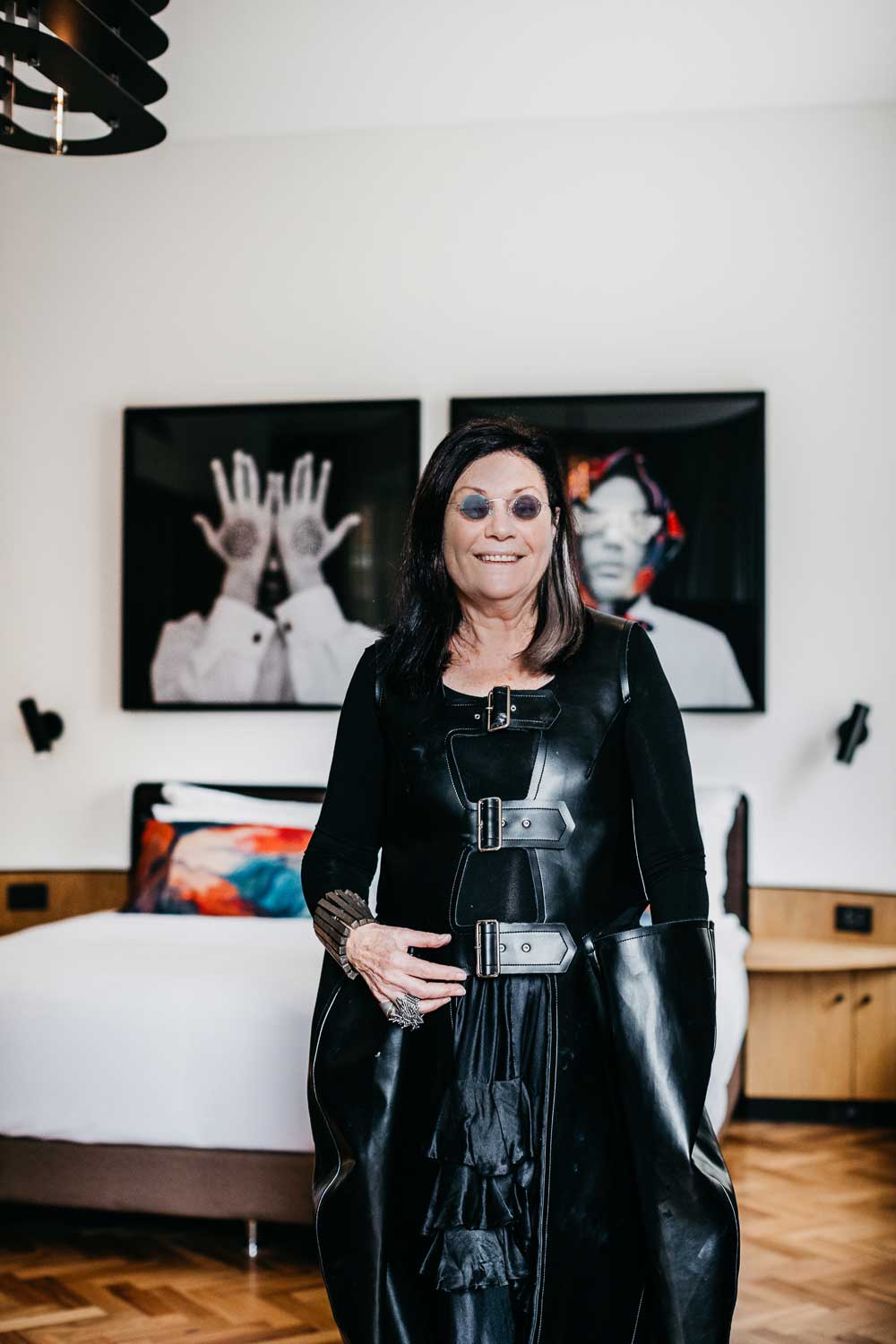
What do you curate?
As Artistic Director (originally with the late curator William Wright) of Sherman Galleries (1986 – 2007) and of the not for profit Sherman Contemporary Art Foundation (SCAF, 2008-2017), I have curated (selected artists and organised) literally hundreds of exhibitions with catalogues in tandem with expert teams.
In addition, together for many years with my husband Brian, a serious personal collection has been assembled. The exhibitions (Sherman Galleries and SCAF) and the Gene & Brian Sherman collection, plus the current SCCI (2018 – 2022) Hub programme & my fashion & jewellery collections (beginning 1985) underpin what I call my curated life.
What does the word ‘curate’ mean to you?
The Latin root of the word ‘curate’, is “to take care of”. Think of the church – a Curate caring for his flock. Since the mid-last century, the art world has fulsomely embraced this term to refer to the professionals who take care of museum and other collections. Old Masters, International art, art from the Asia Pacific region, contemporary photo media and moving image art are just a few of the separate collection areas to be found in public galleries – each one of which is headed up by a senior curator and, in larger museums, by a curatorial team.
Nowadays, freelance independent curators work exclusively as exhibition organisers – as opposed to collection builders and keepers. They select and organise (freight, customs, insurance and installation), working on local, national or international shows – temporarily taking care, without the responsibility of maintaining a permanent collection.
How would you define your style?
My style relates closely to my collection building and way of being in the world. Waste has always been an anathema to me. My aversion to waste can be traced back to my upbringing in South Africa – where a serious portion of the black population lived, (and still does), in poverty. I keep thirty-two (mostly separate) pieces in my wearing wardrobe, focussing since 1985 on just three designers Issey Miyake, Yohji Yamamoto & Comme des Garçons.
A one-in-one-out policy has been in place since 1985, with deaccessioned best pieces donated thus far to the PowerHouse Museum and designs with less wow-factor going to vintage outlets or friends. I wear mostly black – occasionally navy, kaki, or metallic shades.
My over 250 piece non-precious jewellery collection of one-off bracelets & rings (silver, bronze, copper, paper, rubber and more), by artist jewellery makers, complement my monochromatic wardrobe.
Do you consider curation as a process of carefully selecting?
Yes. A selection process based on deep knowledge, serious research, a good eye & finely tuned intuitive judgement.
What is the most rewarding project you’ve worked on to date?
Fugitive Structures, a four-part, four year Project (2013 – 2016) of architectural pavilions were all super rewarding. Innovative work included pavilions by two Australians; Andrew Burns: Crescent House (2013) & AR-MA: Trifolium (2014), an Israeli collective – Sack and Reicher + Muller with Eyal Zur – Sway , and Green Ladder , a bamboo structure by Vietnamese architect Vo Trong Nghia which was truly a highlight.
Through working with these young practitioners I came to understand, in some depth, the imaginative expertise that characterises the work of exceptional architects.
What is your creative process?
Daily research, consistently reading fiction & biography, exploring the work of great cinema directors, moving between my two languages, (English & French), visiting galleries & artist studios and finally listening to my heart.
How would you define a well curated space?
The space would be compositionally satisfying, visually compelling, intellectually challenging or informative, accessible initially without wall texts and, when more deeply investigated, revealing innovative & mind expanding concepts.
Do your curatorial sensibilities cross over from your professional into your everyday life?
I see my life as a curated endeavour.
What advice would you give those looking to enter into this field?
One needs basic skills in order to flourish. These might include; sensitivity to & interest in visual stimuli, the capacity to research and hierarchise material, competent writing and oral skills. In addition, a key to success would be a strong desire to learn and share knowledge.
When you’re travelling and need to focus on a project, what’s the best way to unwind at a hotel?
Travel has been my mainstay through decades of creative project making. The diversity and richness of Asia revealed itself to me gradually over many trips, via the formation of friendships and through much reading. There is so much more to learn. As doors to knowledge open, further doors reveal themselves. Never ending explorations provide increasingly heightened pleasure.
Hotel spas and gyms provide the best downtime options for me whilst traveling for work. Also catch-ups with my worldwide network of longstanding friends and family.
Do you have any projects coming up that you’d like to share?
My SCCI Project, The Hubs, are in effect conferences on architecture & fashion as forms of cultural expression) encapsulate and combine all my interests: knowledge sharing, design in built form and on the body – plus social interaction.